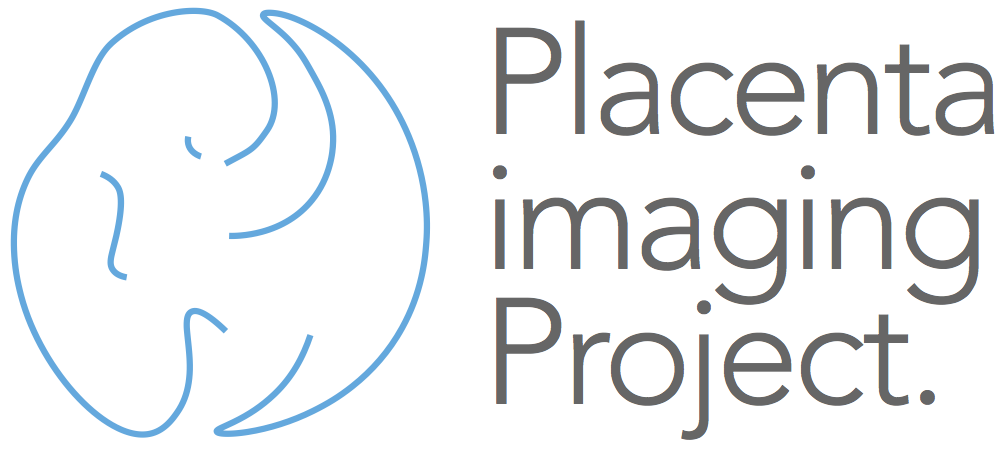Study techniques
T2* mapping
Diffusion MR Imaging
Diffusion MRI sensitises the MR signal to water molecule dispersion through incoherent Brownian motion. The micron-scale architecture of the tissue determines the dispersion pattern over the millisecond timescale to which diffusion MRI is sensitive. Through a model of the underlying tissue, we can predict the dispersion of water molecules and subsequently the MR signal. Conversely, combinations of diffusion MR signals support estimation of model parameters that relate to intrinsic microscopic tissue properties. Simple diffusion MRI applications estimate the apparent diffusion coefficient (ADC) or diffusion tensor, which act as surrogates for tissue properties, but tend to be non-specific. Intravoxel incoherent motion (IVIM) is another common component of the dMRI signal in biological tissue. It is associated with a much higher pseudo diffusion coefficient that arises from flow in multiple directions, e.g. in the capillary network, appearing as pseudo-diffusion at the voxel scale. Microstructure imaging is an emerging biomedical imaging paradigm that uses non-invasive techniques, such as MRI, to infer and map information about microscopic tissue architecture (micrometre or nanometre scales) in macroscopic images (millimetre scale resolution). The idea addresses a key limitation of most non-invasive imaging techniques: lack of specificity – differences in image intensity can arise from a wide variety of changes in tissue, so are difficult to attribute to a specific pathology. Microstructure imaging uses a mathematical or computational model to relate MR signals to features of the underlying tissue. From a set of suitably informative images, we can then solve an inverse problem in every image voxel to estimate and map tissue features.
In this study we will build on the successful body of work in brain and cancer imaging to develop a diffusion-based microstructure-imaging technique specifically for the placenta. New models will separate blood and cellular signals to enhance analysis of fetal and maternal perfusion and uniquely probe cellular/villous architecture, both aiming for new and early indicators of impaired implantation and placental dysfunction.
Combined functional MRI techniques
MR Elastography
Conventional palpation and static US elastography imaging provide an indirect assessment of mechanical properties of internal tissue by assuming that observed deformation at depth is directly proportional to local stiffness, which ignores the impact of overlying tissues. Unambiguous measurement of tissue stiffness requires both the local force and local deformation to be determined. Static elastography lacks local force information but this can be achieved by transient/dynamic elastography methods which utilize low frequency mechanical waves]. Tissue biomechanical properties can be measured in vivo precisely and in an unbiased way via magnetic resonance elastography (MRE), with very promising results for liver fibrosis, breast cancer, and neurodegenerative diseases. A safety study of MRE displacement data from 29 MRE exams, including liver, brain, kidney, breast, and skeletal muscle, has provided evidence that vibrational exposure is well within accepted safety guidelines. Generally MRE employs mechanical transducers in contact with the patient to generate mono-chromatic low frequency waves (~50Hz) that propagate through tissue and visualised using phase-locked motion sensitized MR sequences. Local shear stiffness is then extracted from the images by solving the underlying wave equation. We have previously used MRE in the liver, brain, breast, and prostate.
Transient shear wave elastography (SWE) with US detection has been applied successfully to in vivo quantitation of placental elasticity in preeclampsia and has demonstrated that the stiffness of the placenta is significantly higher in these patients. Those data only present a local snapshot and do not provide a full picture of the biomechanical integrity of the placenta. The rather complex geometry present in the placenta favours full 3D elastography approaches, which provide novel information due to significantly enhanced precision. This advantage of MRE (3D) over US elastography (1D) has already been demonstrated in the context of liver fibrosis staging. Initial SWE results indicate increasing values of Young’s modulus of placental tissue associated with increasing intervillous fibrin deposition in placental terminal villi. The villous being the functional unit in the placenta permitting effective exchange of both oxygen and nutrients form mother to fetus. However, other expected correlations to collagen fibres in terminal villi or to the density of terminal villi are currently not observed. It is likely that this is due to missing precision in the US-SWE method. Furthermore, vascular re-organizations are very pronounced within the placenta, and we expect that multi-frequency MRE will reveal those changes via scattering induced modulations in the dispersion properties of the phase velocity.
MR Oxygenation
Oxygen (O2) consumption provides a clear marker of fetal health and O2 transport is a major placental function. Blood oxygenation within the placenta is heterogeneous since it contains both arterial and venous blood and also low saturated fetal blood. Therefore, a maternal hyperoxic challenge will produce a heterogeneous increase in blood oxygenation, which will cause changes in its magnetic susceptibility and relaxation times (T1, T2 and T2*). MRI has been used to measure O2 saturation in the fetal cerebral arteries and umbilical cord. Studies in humans, sheep and rats have shown that maternal hyperoxia will increase placental magnetic relaxation times and that changes are largest on the fetal side making placental oxygenation more homogeneous. Basal placenta relaxation times decrease during gestation consistent with increasing tissue density and decreasing blood O2 saturation. It has also been shown that the T1 change on hyperoxia varies with gestational age (although results are conflicting). The change in placental T2* on hyperoxia has been reported not to occur in small-for-gestation pregnancies, although results were not corrected for gestation. Some studies have shown effects of maternal hyperoxia on various fetal organs. However, in healthy fetuses no change has been observed in the fetal brain, consistent with the brain sparing hypothesis. With one exception, these studies have been carried out in small numbers and have used 1.5T scanners. To test the potential of this method properly, larger numbers of pregnant women need to be studied at higher MRI field strength, which increases sensitivity to oxygenation. We expect that the change in O2 distribution in the placenta in response to hyperoxia will provide a marker of compromised placental function that is specific to different causes of compromise. We expect that compromised maternal delivery to the placenta will lead to a slower response (than in controls) with more widespread change due to baseline level of hypoxia, whereas compromised extraction by the fetus will lead to an attenuated response since there would be limited extraction at baseline. O2 extraction can be measured in the fetus from blood susceptibility. We will also use measures of blood oxygenation in the uterine vessels and cord to assess fetal rate of O2 consumption. When linked with IVIM measurements of blood movement in the placenta, this will give us an insight into changes in O2 transport in pregnancy compromise.
Image analysis
Image analysis will contain three components; motion correction, segmentation and modelling. We have developed core capability to acquire and correct images of the fetal brain and lungs in the presence of motion that we will apply to our placental data in order to recover motion free placental reconstructions for all proposed acquisition methods to be used. MR-based placenta studies often rely on expert delineations and, while manual methods are reliable, automated segmentations of the placenta remain necessary to fully identify the population level characteristics and to better support examination and diagnosis. Manual delineations of the placenta can be used as ‘training data’, or libraries of ‘atlases’. Automated atlas-based methods propagate the authoritative manual atlases to new images. Well established in the brain, such an approach would benefit from the availability of delineated placentas in sufficient numbers to capture its variability over the population and would allow the selection of subject-specific atlases to improve accuracy. Further automation is promised by machine learning methods, which have been applied successfully to this, for example to organ detection in the thorax, or to fetal head localization in MR. Localization focuses the field-of-view, supporting the task of organ-specific segmentations and enabling a hierarchical approach where knowledge of one organ’s boundary can inform the segmentation of another. Locating and segmenting placenta in its anatomical context will benefit from such an approach. The shape and size distributions of substructures within the placenta will provide complementary information to global shape and volume measures. Additionally, segmentations combined with multi-modal imaging will enable voxel scale analysis of the placental tissue. Co-registering multi-modal data for each subject provides a feature vector of measures at each location. While measures can be summarized, e.g. by integrating over the organ, group level analysis can also be carried out by co-aligning all subjects to a placental atlas enabling multivariate statistical analysis at the voxel level. This can include all covariates, e.g. indicators of health, outcome or fetal programming.
Fetal ECG
Placental dysfunction results in fetal compromise both in overall somatic growth but also in alterations or even injury to the developing fetal nervous system. Fetal electrocardiographic (fECG) measures of heart rate variability provide a measure of the fetal autonomic nervous system. Heart rate variability has been linked to measures on subsequent neonatal EEG and to the neurodevelopmental outcome of the infant. In addition fetal heart rate variability has been linked to US Doppler parameters of reduced placental function. FECG is easy to record and represents a maternally acceptable, non-invasive, cheap, transportable and potentially widely available tool for the assessment of fetal wellbeing. It has recently been used in over 10,000 maternal recordings in the NIH funded Safe Passage study, data from which are currently being analysed. Assessment of the fetus throughout gestation is imperative to understanding placental function. We plan to collect contemporaneous recordings of fetal heart rate variability to compare with our placental MR parameters

